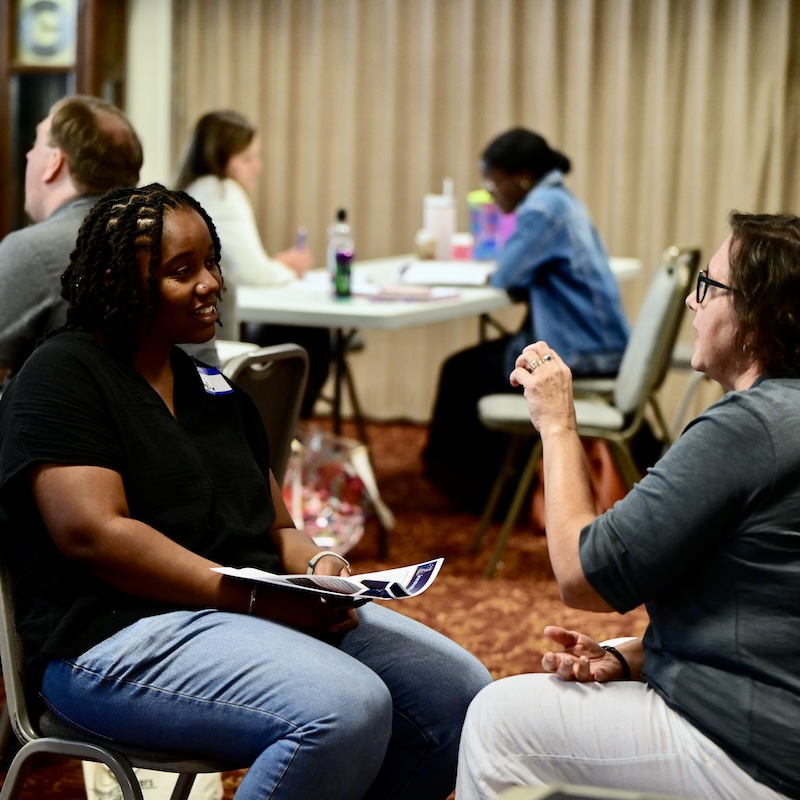When a natural disaster hits, it can upend an entire community and change people’s lives in a matter of hours. Faith communities aren’t immune to the change and devastation. That’s a lesson Rev. Patrick Neitzey of Central United Methodist Church at Haw Creek in Asheville, N.C., learned firsthand when Hurricane Helene hit his community in September 2024.
Neitzey and the people of Asheville suddenly found themselves cut off from the outside world. Roads in every direction were impassable. There was no cell service, Internet, television, landline phones, or use of credit cards.
In the aftermath of Hurricane Helene, Neitzey and his church learned valuable lessons about ministry during a natural disaster. From balancing the immediate needs of the congregation with the needs of the community and changing how they measured success, Central UMC learned the power of working alongside their neighbors.
These five lessons offer guidance for ministry leaders in the wake of a natural disaster. The insights also apply to ministry in less disastrous times.
- Avoid the urge to turn inward: The congregation at Central UMC had significant needs of their own, and it would have been easy for the church to turn inward immediately after the hurricane. But once the congregation was accounted for, they quickly mobilized and went to work engaging with their neighbors.
They chose to believe in the “priesthood of all people,” according to Neitzey, viewing every person in the community as co-conspirators in God’s kingdom as they sought to cultivate community partners.
- Identify the assets in your community now, before a disaster strikes: Neitzey’s most significant learning was the importance of cultivating community partnerships before a disaster. Building relationships with other organizations, associations, faith communities, institutions, and groups in the community before a crisis better positions churches to respond quickly when a disaster happens.
Understanding the role Central UMC played in the web of partnerships they had in the community was critical to being effective and avoiding burnout throughout recovery efforts.
- Adjust metrics of success: Neitzey realized that to be successful after a disaster mostly meant holding space for listening and being attentive to the people in his community. While it would have been easy to focus on the number of people served, or how many meals were distributed, true success happened by building transformational relationships with people.
- Care for yourself as you care for others: Compassion fatigue, overwhelm, and burnout are challenges ministry leaders face even without the added stress of a natural disaster. As Neitzey discovered, pastoring after a disaster could be a 24-hour job without setting boundaries and building in time to rest. When a crisis arises, it’s more important than ever for ministry leaders to care for mind, body, and spirit.
- Ministry after a disaster is a marathon, not a sprint: A well-known proverb says, “if you want to go fast, go alone. If you want to go far, go together.” Rebuilding a community after a disaster often takes years, and it’s impossible to do the work alone. Getting to know neighbors, working alongside them, and being in ministry with them, along with God’s help, allows faith communities to do more together than they ever could alone.
In the aftermath of a natural disaster — and in the ordinary rhythms of ministry – mutual community partnerships and an external focus lay the foundation for deep transformation. Since the major disruptions ended in Asheville, the lessons Central UMC learned and relationships formed represent a legacy of Hurricane Helene that continues to bear fruit and hope.
Explore the assets and potential partnerships that exist in your community with the Community Discovery Package, a resource that will help your faith community understand your context more deeply, dismantle assumptions, and view your surroundings through a new lens.
About the Author— Andrew Mochrie is the Theology & Service Director at the Ministry Leadership Center. He is an alum of our Graduate Program. He has served in congregational youth ministry for over a decade in Georgia, New Jersey, Tennessee, Texas, and North Carolina. He and his wife EJ live in Western North Carolina with their two children, Iris and Edmund.



